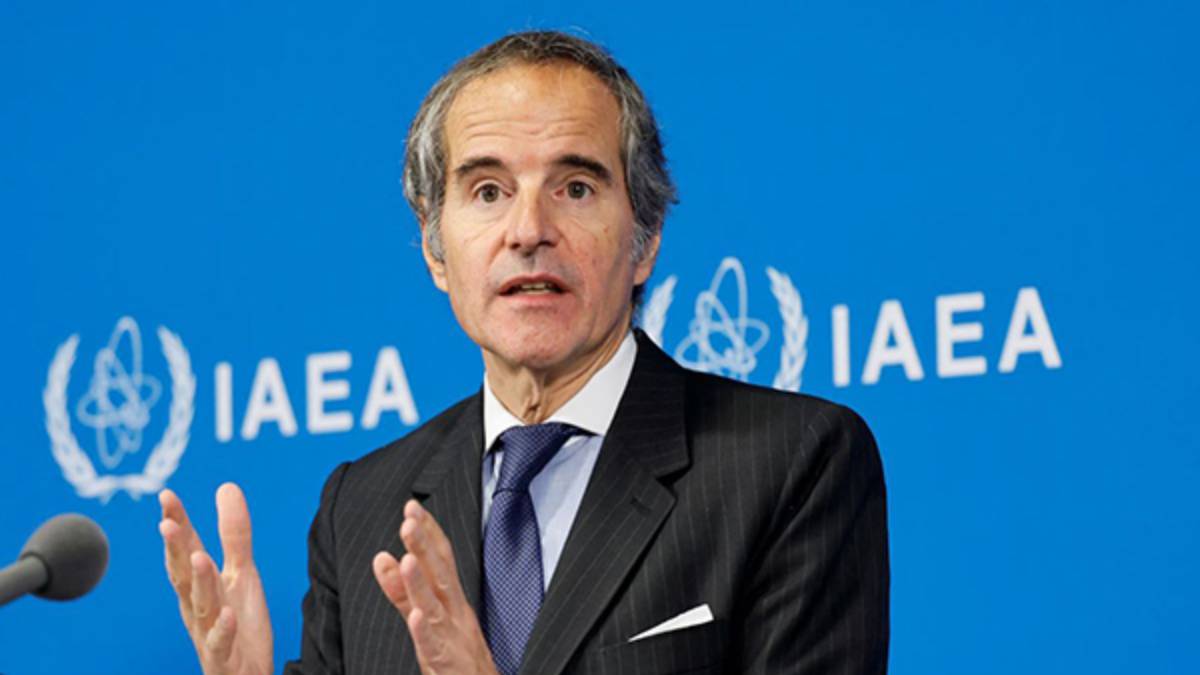International Atomic Energy Agency (IAEA) Director General Rafael Grossi confirmed on Thursday that the agency is actively monitoring the aftermath of Israeli airstrikes on nuclear-related sites across Iran, amid rising fears of a potential radiological incident.
Grossi stated that while IAEA inspectors remain present in Iran, the number of staff has been reduced due to security concerns. The agency is prepared to resume full safeguards inspections under the Non-Proliferation Treaty (NPT) once conditions are deemed safe.
“The Agency is and will remain present in Iran,” Grossi said. “Safeguards inspections in Iran will continue as required… as soon as safety and security conditions allow.”
The escalating conflict began on June 13, when Israel launched ‘Operation Rising Lion’, targeting Iran’s military and nuclear facilities in Natanz, Arak, Esfahan, and Tehran. In response, Iran initiated ‘Operation True Promise 3’, striking Israeli energy and military infrastructure, according to IRNA.
According to IAEA reports, significant damage has been observed at several sensitive facilities:
- Natanz Fuel Enrichment Plant: The above-ground Pilot Fuel Enrichment Plant was destroyed, along with critical electricity infrastructure. This may have impacted centrifuges operating in underground cascades.
- Esfahan Nuclear Site: Four buildings were hit, including a uranium conversion plant and a chemical lab. However, off-site radiation levels remain unchanged.
- Tehran Research Centre: Facilities producing centrifuge components were struck, with two buildings destroyed.
- Khondab Heavy Water Reactor: Hit on June 19, though the reactor was not operational. However, nearby Heavy Water Production Plant structures, including a distillation unit, were also impacted.
Despite the extensive damage, Grossi assured that no major radiological impact has been detected outside the affected facilities, though localized contamination within some sites was confirmed.
“There is a lot of nuclear material in Iran in different places… the potential for a radiological accident with dispersion of radioactive particles exists,” Grossi warned.
Emphasizing the urgency of diplomacy, Grossi urged maximum restraint and expressed willingness to travel immediately to engage with relevant stakeholders to ensure the safety and security of nuclear facilities.
“Military escalation threatens lives, increases the risk of radiological release, and delays critical diplomatic efforts,” he said.
The IAEA chief stressed that effective crisis management depends on transparent, technical cooperation with Iranian authorities and continued regional dialogue.
Meanwhile, the Israel Defence Forces (IDF) issued evacuation advisories in Arak and Khondab, indicating further military operations targeting Iranian infrastructure.
As the conflict between Israel and Iran enters its eighth day, global attention remains focused on the IAEA’s assessments and the growing risk of a nuclear-related emergency.





